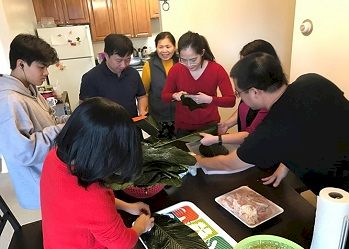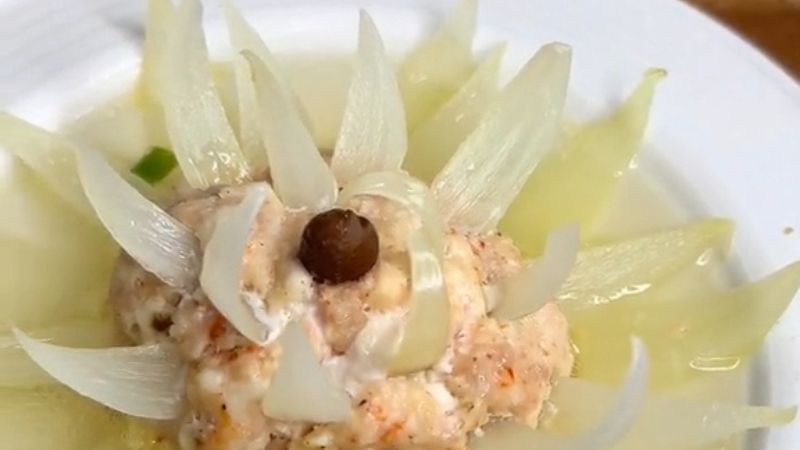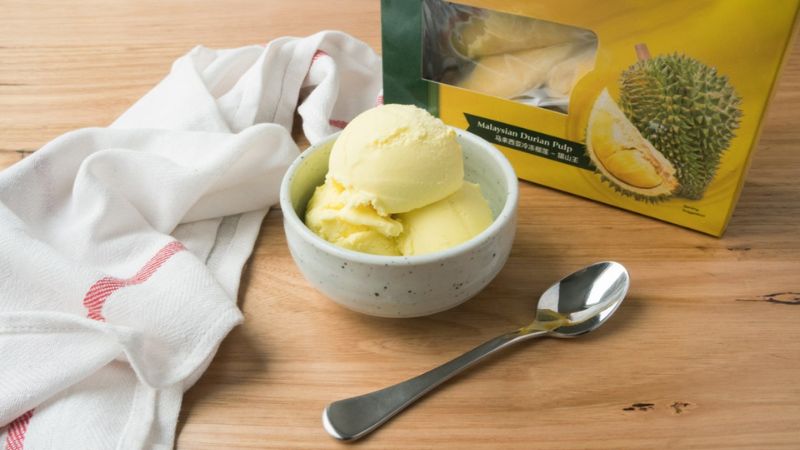The meaning and tradition of Vietnamese family meals
Just one family meal of Vietnamese people from past to present always contains so many morals and love that each family member always has for each other, sitting together with a tray of rice, sharing Daily stories, all creating a warm atmosphere that everyone expects after a long hard working day.
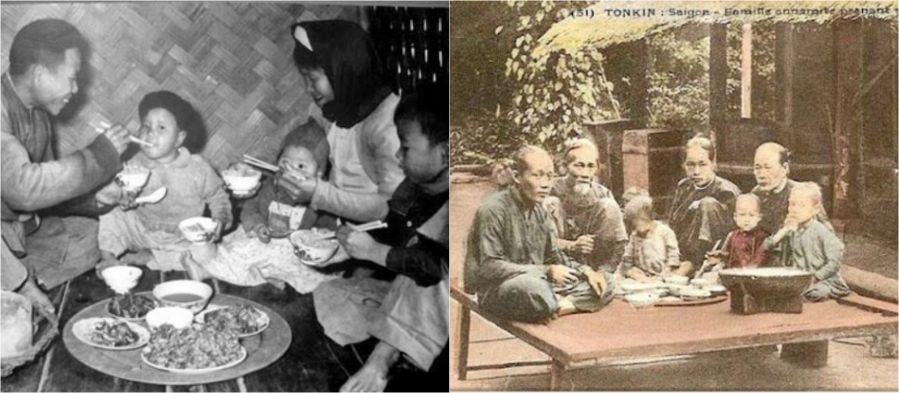
Since ancient times, the love in the family has always been nourished by the image of a happy meal that the hands of the great women in the family have to sit by the kitchen every day, left hand and smoke fan. ngut, the other hand must always rush to prepare a hot pot of vegetable soup for the whole family. How can those images be forgotten in the memories of each family member? Each dish is the sky of love that the women we respect bring, containing the noble heart of the cook.
Rice is the main ingredient in every Vietnamese meal, so instead of being called a meal, Vietnamese people are familiar with the familiar name of "meal". Next to the white rice bowls are the dishes of boiled or wild fried vegetables and hot pot with braised meat, just off the stove that has fascinated millions of national hearts. Vietnamese people still have the virtue of saving so there is often little meat in the meal, but when it comes to the traditional New Year holidays or the death of grandparents, they display a lot of hearty dishes to be able to honor their grandparents was born and raised.
Why is the "tray" of Vietnamese people round?
Many people explain that the tray of rice is the symbol of the Sun and Moon, which is often mentioned in fairy tales. It is not wrong but the deep meaning of the round tray is the cohesion of all the participants sitting around the tray, the members see each other's eyes and can easily share the pieces. Stir-fried vegetables or boiled pork pieces with fish sauce that mom has devoted all the love to make.
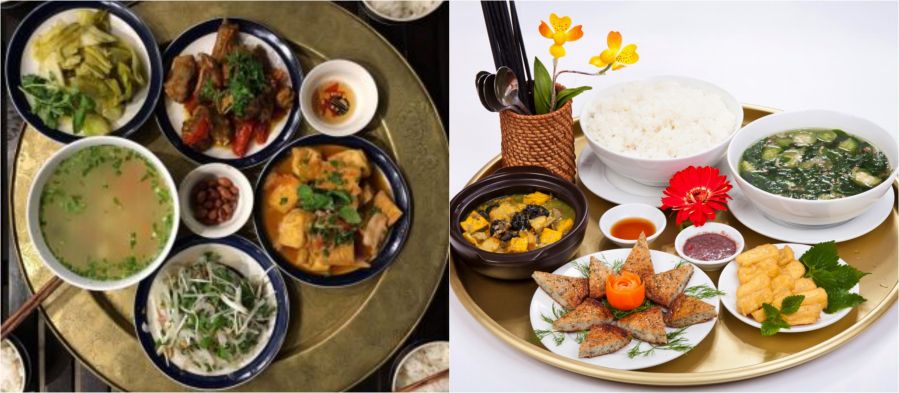
Chopsticks have a particularly important role in Vietnamese meals, from an early age when our parents taught us how to hold chopsticks smartly to avoid falling food. The first time holding chopsticks, the curiosity about this long pointed tool, the admiration when grandparents, parents, and siblings all use it very skillfully, every naive of childhood about chopsticks also makes I smile every time I remember.
Traditional families of Vietnamese people always gather many generations to live in the same roof, on average, the generation of families usually lasts two to three generations but now there are many families with up to four generations. It makes many people admire the gaze when all members live together, live together and can see each other growing up daily.
The taste of each meal is reflected in the gathering of the members, not the amount of dishes in the tray or the quality of the meal that day.
Each family member's seating position is also a tradition of Vietnamese meals. "There is up and down" is culture. The elderly, the breadwinner is always sitting at the top of the mouthpiece, the center to be able to follow other members. Grandparents have the phrase "eat in the pot, sit in the direction", when eating and drinking should also be considerate. The dishes are arranged to be convenient with all the members in the meal to be perfect. Family members are like that, visitors to the home are more warmly welcomed, always attentive by the homeowners, porridge, but the priority positions show the hospitality of the Vietnamese people.
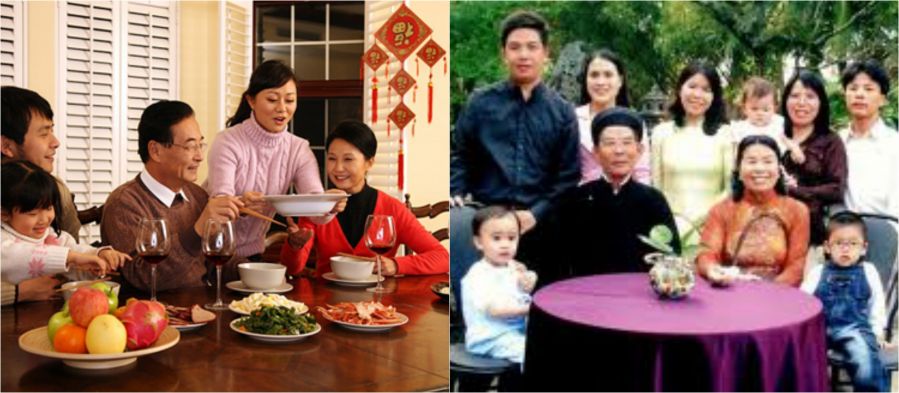
"Invite rice" is the mouth of the members when sitting around the tray before holding chopsticks. Before bringing the bowl, eating the rice, inviting the students into two hours "inviting rice" shows how much respect for each other. Depending on the age of the person sitting on the tray, the order of inviting before and after, in turn, from the smallest one must invite grandparents, parents, uncles ... to eat. When the oldest person holds a bowl of chopsticks, the other family members take the bowl to enjoy the meal.
Despite the ancient culture, the delicacy and humanity that it brings still remain intact in the hearts of family members.
Vietnamese family meal today
Modern, two words are transformed instead of traditional words of the old days. One-generation, two-generation families are gradually appearing to be encroaching on behalf of multi-generation families in the past. From these changes, the daily meals were much more boring, lacking in a joyful atmosphere, and care and attention were lost a lot.

Life is always busy, every day has to race against time to make the spirit, the mind of each person at the meal is not the same as the old days anymore. Office meals, times meet to say hello. The members' confided conversations were also sparse. Everything broke the beauty of the tray of rice cake that her grandparents conveyed.
It is undeniable that some young people today "hate family meals", because they feel it is a compulsion, to eat meals with parents not to take the phone and lose a game town with friends. , eat meals with parents not to sit chit chat with small friends, ... the usefulness of technology has gradually taken away the spirit of traditional meals.
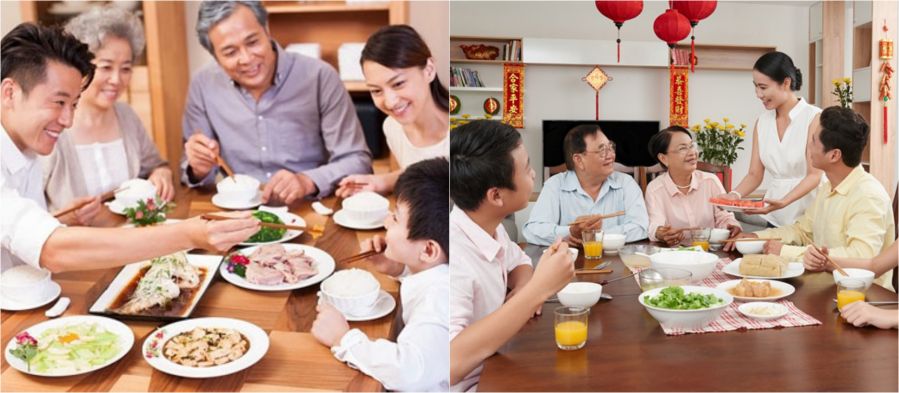
At present, many families still maintain the tradition of "tray of rice" which is a funny sign of the nation. The meal will be more complete, especially when we love it, cherish, love the members every day, the time of 30 minutes sitting beside the tray is very simple. Always love your family members, who are always willing to wait, love and never betray you.
Source: Summary
Nấm Mối Đen là gì? Những công dụng và giá trị tuyệt vời mà bạn không thể ngờ
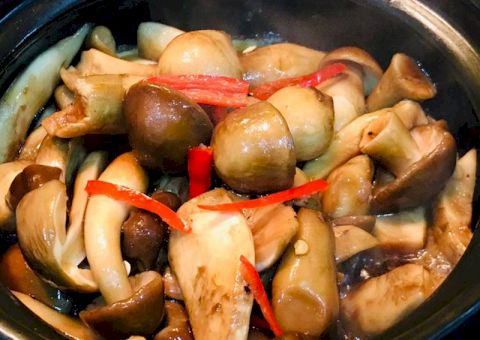
Nấm Mối Đen có vị ngọt thanh một cách tự nhiên là một loại nấm ăn rất ngon, giúp nâng cao sức khỏe với nhiều giá trị dinh dưỡng, hỗ trợ ngăn ngừa và điều trị bệnh hiệu quả, tốt cho máu cũng như hệ tim mạch, huyết áp,… thích hợp ăn kiêng giảm cân.
Bộ Y tế cảnh báo khẩn: Pate Minh Chay có độc tố độc lực mạnh

TTO - Bộ Y tế vừa phát đi cảnh báo sản phẩm Pate Minh Chay có chứa độc tố độc lực mạnh. Từ ngày 13-7 đến 18-8 vừa qua đã có 9 bệnh nhân bị liệt cơ, yếu cơ, sụp mí, tứ chi yếu... sau khi sử dụng sản phẩm này.
Bà bầu có nên ăn chay? Ưu và nhược điểm khi mang thai mà ăn chay

Ăn chay thường dành cho một số tín ngưỡng hoặc dành cho những ai đang xây dựng cho bản thân một chế độ ăn thanh đạm.
Ăn chay thế nào cho đúng? Không phải ai cũng nắm rõ điều này
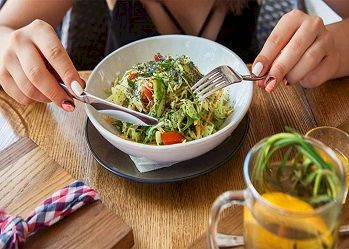
Nhiều người nghĩ rằng, ăn chay chỉ cần ăn rau củ quả và các thực phẩm không có thịt, chất béo. Đây chỉ là một phần trong ăn chay, bên cạnh đó làm sao ăn chay thế nào cho đúng, sao cho cơ thể khỏe mạnh thì không phải ai cũng nắm rõ
Tại sao ăn chay lại tốt cho sức khỏe
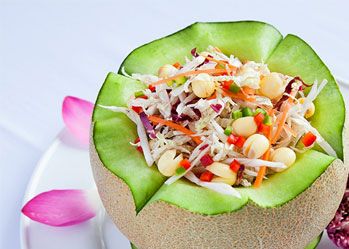
Hầu như ai cũng bảo rằng “Ăn chay là khổ”, nhưng mấy ai thật sự biết rằng cái gì cũng có cái giá của nó và rằng sự khổ đó sẽ rèn luyện chúng ta trở nên lành mạnh và cân bằng hơn rất nhiều so với những gì chúng ta có thể tưởng tượng.
5 lợi ích của việc ăn chay đối với sức khỏe và tinh thần
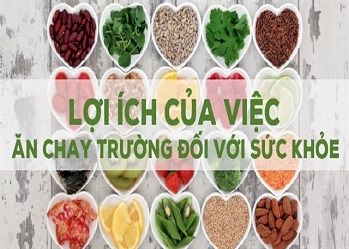
Ăn chay không chỉ là một tín ngưỡng vào những ngày rằm, mùng 1 hàng tháng mà đây còn là giải pháp mang đến nhiều lợi ích cho sức khỏe và tinh thần của mỗi người.
Sự khác biệt rất lớn giữa phong tục Tết xưa - Tết nay
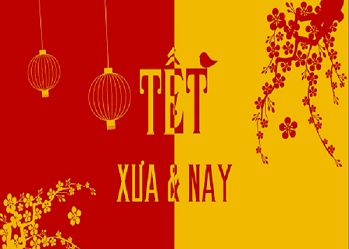
Từ việc chuẩn bị Tết, đón Tết, ăn Tết,… giữa phong tục Tết xưa – Tết nay đang có sự thay đổi rất lớn khi cuộc sống con người ngày càng hiện đại.
5 trải nghiệm thú vị chỉ có ở mảnh đất Tây Nguyên nắng gió

Mảnh đất Tây Nguyên không chỉ biết đến với những rừng núi cà phê bạt ngàn, miền đất đỏ Bazan, những ngôi nhà Rông độc đáo, mà nơi đây còn mang đến rất nhiều trải nghiệm thú vị cho du khách mỗi khi ghé đến.
Tết Việt trên đất Mỹ, làm dịu đi nỗi nhớ hương vị Tết quê nhà
